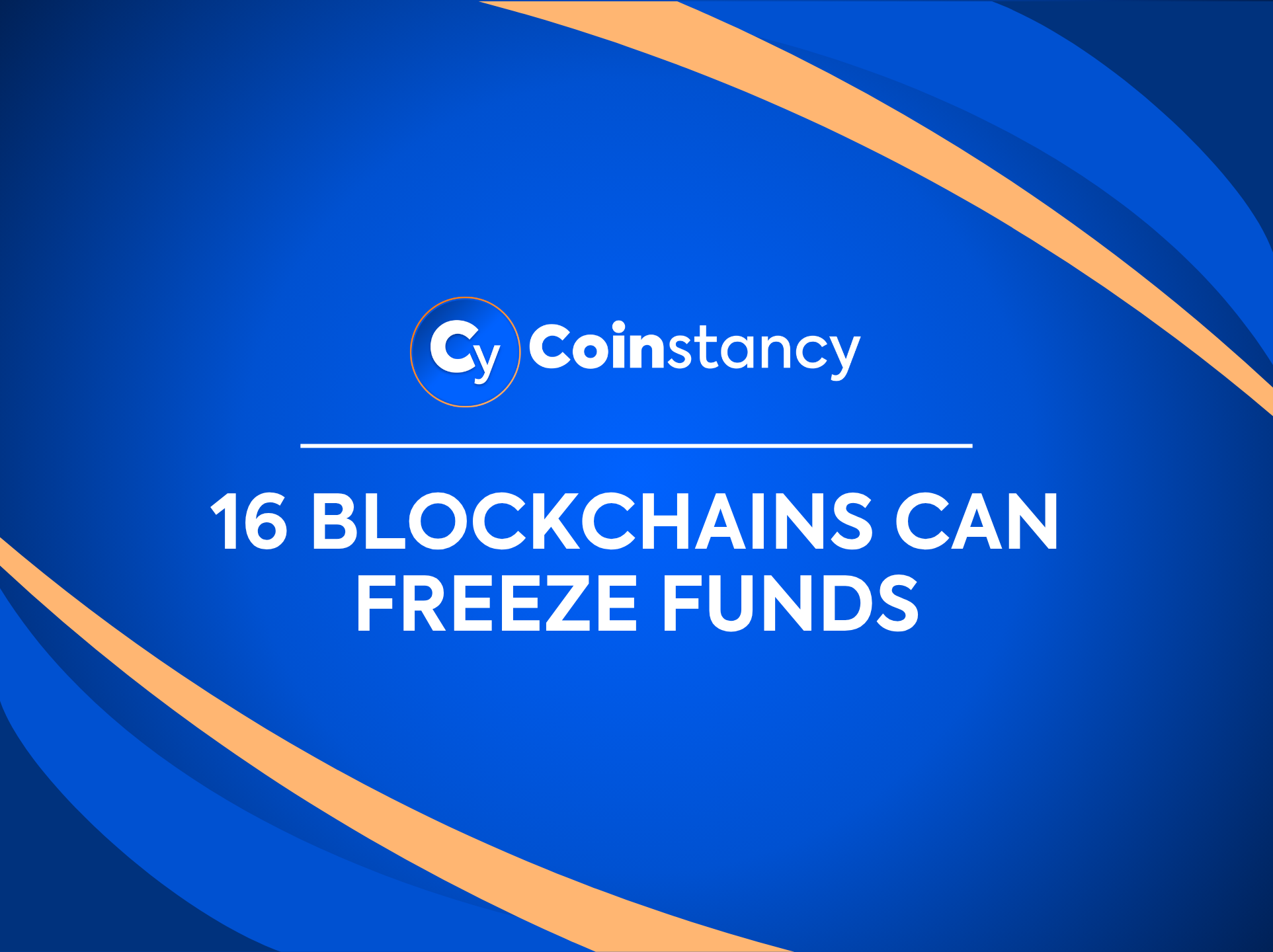
16 blockchains revealed to have hidden code allowing funds to be frozen
A hidden risk most users don’t know about
A recent technical analysis revealed a surprising fact: 16 major blockchains contain internal mechanisms that can freeze or block user funds.
These functions are almost never highlighted publicly, yet they exist deep inside the infrastructure of widely used networks.
This discovery challenges a common belief: that digital assets stored on a blockchain are fully immune to external control. In reality, several networks contain built-in tools that allow specific entities to stop transfers or lock wallets.
Get the best returns on Coinstancy.
Sign up for free in just a few clicks.
How these internal mechanisms work ⚙️
In the affected blockchains, developers have identified functions such as freeze, pause or blacklist.
These tools allow an authorized party to:
- block a wallet,
- stop a transaction,
- freeze part or all of a balance.
Originally, these features were created to:
- stop ongoing hacks,
- limit the impact of exploits,
- protect users in case of critical bugs,
- comply with legal requirements when necessary.
The main issue is not their existence, but the lack of transparency surrounding their activation and who controls them.
The blockchains identified 🎯
Among the networks found to contain freeze or blacklist mechanisms are several widely used chains, including:
- BNB Chain
- Aptos
- Sui
- VeChain
- WAX
- Kava
- Cronos
- Oasis Network
Additional networks from the same group also include similar internal functions, sometimes coded directly into the protocol or managed through privileged governance permissions.
Some platforms even allow a token-level freeze, giving issuers full authority to block an asset.
This is important: a blockchain may appear decentralized on the surface while still containing centralized control points within its validators, modules, or smart contracts.
Why this creates a major trust issue ⚠️
Even when these tools were designed with security in mind, they can lead to serious consequences:
- unjustified freezes,
- regulatory pressure,
- unilateral intervention,
- human error,
- potential abuse of power.
For users, this means that holding a wallet does not always guarantee full control over your funds.
For businesses, it raises concerns about the reliability and neutrality of the networks they build on.
This highlights an important truth: not all blockchains offer the same level of independence. The word “decentralized” does not always match the underlying code.
What users should take away 🧭
To protect your assets, it is important to:
- understand the actual decentralization level of the networks you use,
- check whether freeze functions exist in the code or documentation,
- identify who can trigger those functions,
- favor networks with transparent and well-defined rules,
- diversify your activity to reduce risk.
Too many users discover only after a problem that their funds could be frozen without warning. Awareness is the first protection.
Get the best returns on Coinstancy.
Sign up for free in just a few clicks.
Frequently asked 🤔
Can all blockchains freeze funds?
No. Only some can. Sixteen major chains have been identified with explicit freeze or blacklist mechanisms. More decentralized blockchains do not include this type of control.
Why do these freeze functions exist?
They were originally designed to stop hacks, limit damage, or comply with urgent security or legal requirements. The concern is that they give a centralized authority the ability to block funds.
How can I know if a blockchain can freeze assets?
The only reliable method is to check the technical documentation or the code. These capabilities are often not mentioned in public marketing materials, which makes staying cautious essential.